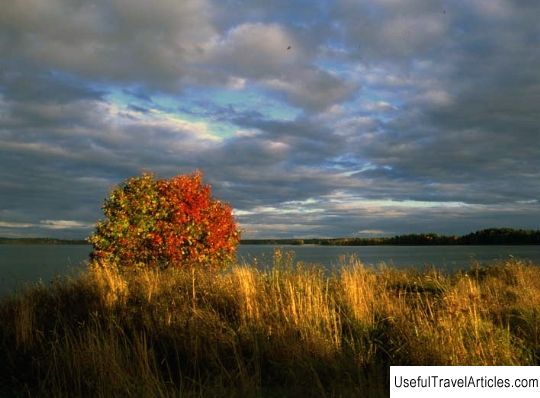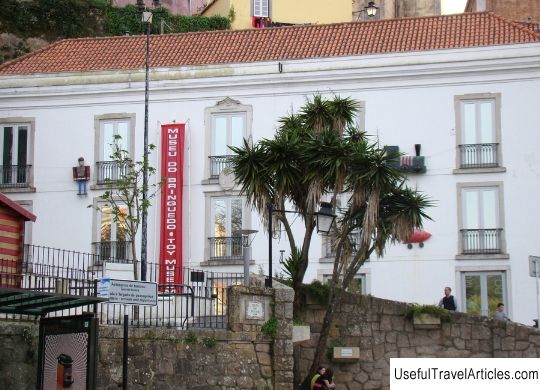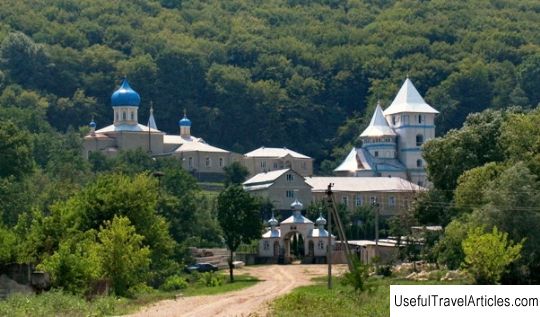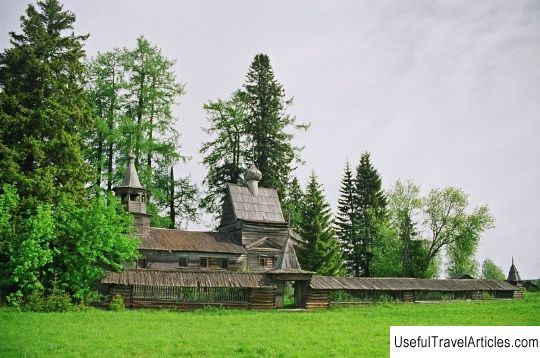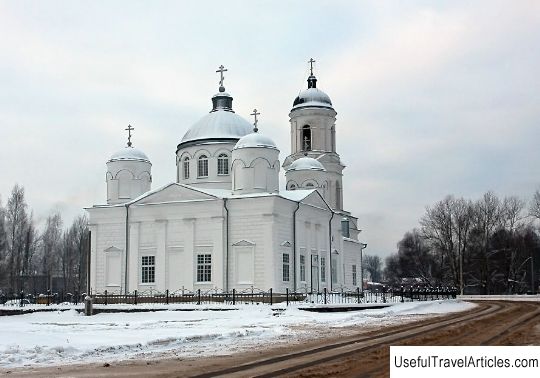Ilyinsky pogost description and photos - Russia - Karelia: Pudozhsky district
Rating: 7,7/10 (645 votes) 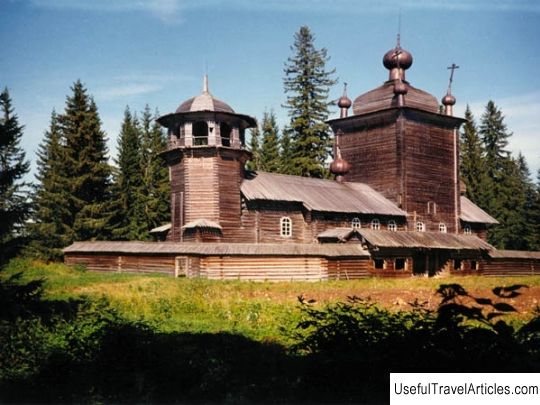
Ilyinsky pogost description and photos - Russia - Karelia: Pudozhsky district. Detailed information about the attraction. Description, photos and a map showing the nearest significant objects. Photo and descriptionThe natural beauty of Vodlozersky Park is complemented by architectural monuments of northern architecture, amazing in their beauty and uniqueness. One of them is located on a small island called Maly Kolgostrov. This is a historical monument and an Orthodox shrine - Ilyinsky Pogost, which for many centuries was the main spiritual center of the Vodlozersky region. In the 16th century, Tsar Ivan the Terrible ordered to build on an island, in the place where there was once an ancient pagan temple, Orthodox church. The year of foundation of the Ilyinsky churchyard is considered to be 1798. The monks stayed here on their way to the Solovetsky Islands, and the original structures of the churchyard were created by them, but the wooden church buildings burned down more than once. In the scribe book of Tyapolkov Mikuly in 1569, the island is called Small Island. The description of that time says that most of the island is rocky and unsuitable for agriculture, only a small part can be used for haymaking. Perhaps that is why the peasant community allocated it for a churchyard, church, and housing for clergy. The first church on the churchyard burned down ten years later. According to a specially issued letter from Metropolitan Varlaam of Novgorod, the parishioners of the Vodlozersk volost in the Kargopol district were given a privilege and instructed to build a new church in the same place at the expense of these funds, but the new church also burned down. The church was rebuilt for the third time at the end of the 16th century. Its creator was Elder Demyan, who, according to legend, founded the Ilyinsky Monastery here. The church stood until 1798 and was dismantled due to dilapidation and a new one was immediately built in the same place - a tent-roofed one, which has survived to our times. In the 19th century, a bell tower was added to the Ilyinsky Church, also a tent-roofed one, but in 1902, during the renovation, its appearance changed to a more "modern" at that time - a round semi-dome with a small spire. The bell tower, ceilings, and walls of the church were then sheathed with planks and planks. The external image of the church has undergone significant changes, and it differs significantly from the typical buildings of this region. Most of all, its appearance resembles Russian temples with small domes. By the beginning of the 20th century, the church on Maly Kolgostrov contained three thrones: the Holy Prophet Elijah, the Dormition of the Most Holy Theotokos, St. Basil the Great. Like many northern monasteries, the churchyard is surrounded by a fence. Despite the low walls, this structure bears a resemblance to ancient fortresses, with its strong gates and powerful roof overhangs. The fence is reinforced with log cabins and covered with a gable roof. During the revival of the fence at the Kizhi churchyard, this very structure was used as a model. On fair days and on holidays, quite successful trade went on here. Villagers and merchants traded in shops that were set up in the fence. Large warehouses were even built on the nearest island for merchants. On the small island lived not only the ministers of the temple with their families, but in addition orphans and cripples, retired soldiers and widows settled. It was a kind of "parish monastery" supported by the inhabitants of the lake villages. Elias Church was closed in 1928. Local residents were forbidden even to bury the dead in this churchyard. In 1932 the last remaining priest was repressed. The priest's widow lived in her home until 1969. She kept church books and some property until her death. Although after 1920, there was not much of it left, since it was burned by the church watchman himself. All the old icons and things, the age of which exceeded the age of the church itself, were destroyed. Most of the iconostasis was taken to Petrozavodsk and preserved in the Museum of Fine Arts. Since 1991, with the creation of the Vodlozersky National Park, the restoration of the Ilyinsky Pogost began. In October 2001, with the blessing of Manuil Archbishop of Karelian, the Ilyinskaya Hermitage was revived here. Hieromonk Nile was appointed its rector. Since December 2006, the Holy Synod in the wilderness has established a monastery for men, the abbot of which was hieromonk Cyprian. Monastic services are performed in the temple of Elijah the Prophet, on Sundays from 10 am Divine Liturgy is served for local residents and guests of the island.      We also recommend reading Church of Alexander Nevsky in the village of Yazhelbitsy description and photos - Russia - North-West: Novgorod region Topic: Ilyinsky pogost description and photos - Russia - Karelia: Pudozhsky district. |
